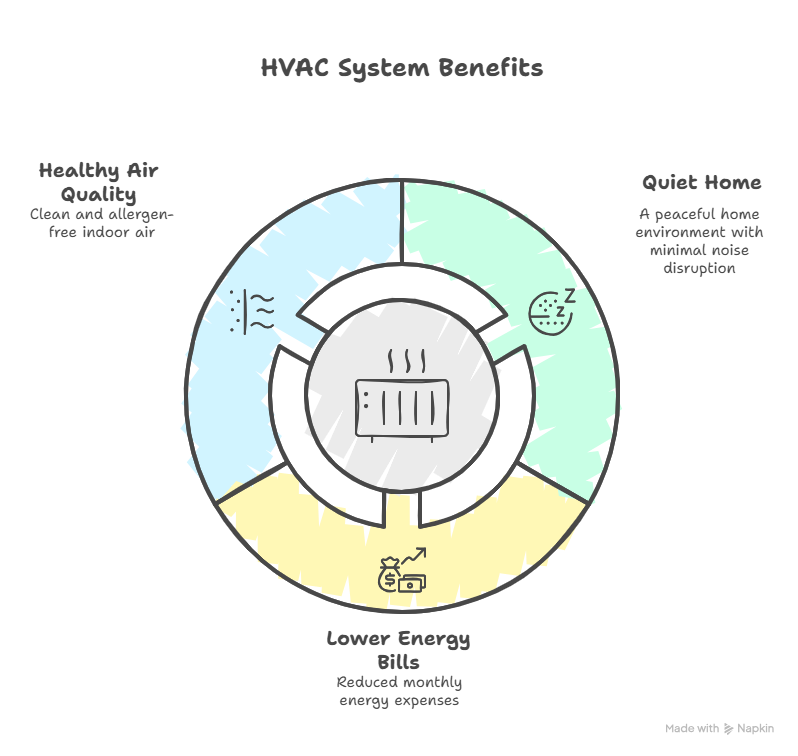Living in the AI Age: How Smart Home Tech Contributes to Sustainability
People are becoming more and more environmentally conscious in every area of life. Keeping a sustainable home is an important part of this. And thanks to the growth of AI, smart technology is now available that is making our homes both more sustainable and easier to live in. It also helps to keep our energy bills down.
In this article, we will provide an overview of several ways in which AI-driven technology is helping to make our homes greener and more responsive to our individual needs.
Energy Efficiency
Keeping homes energy efficient is an essential part of living sustainably. Traditional thermostats allow a lot of energy to be wasted because they tend to heat and cool homes more than necessary. This is where smart thermostats have become a major game changer.
Smart thermostats learn from user behavior and automatically adjust their temperatures according to what they sense a given household’s needs are. Users can even control them remotely by means of mobile apps. This adjustability makes a big difference in reducing waste and keeping energy bills down.
Another smart mechanism that is making a big difference in modern homes is smart scenes. It is normal for people to leave appliances and other devices plugged in when they are not using them, but this actually continues to consume energy.
With smart scenes, people can schedule times for devices to be on or off, and they can establish limits on the amount of energy they use. All these things help people live more sustainably and lower their electric bills.
Water Conservation
Americans waste a tremendous amount of water in their daily usage. Fortunately, AI-driven technologies are helping to address this problem. Smart systems connected to the IoT are able to collect, treat, recycle, and distribute water.
These systems can track water pressure, humidity levels, and temperatures, and are capable of sensing when there is a problem.
One of the devices that people are attaching to strategic points in the home is leak detectors. These small devices come equipped with automatic shutoff mechanisms that immediately detect when water is wasted or when there might be damage.
In instances of flooding, they stop water flow immediately and send alerts to people’s apps that there is a problem. There are also now smart appliances that come with similar automatic water-saving features, such as dishwashers and washing machines.
For people who irrigate their lawns, smart irrigation systems use sensors to detect the amount of water in soil and can deliver exactly the amount that is necessary to plants. These systems reduce waste and allow plants to grow in optimal conditions.
Smart Waste Management
Smart waste management systems have sensors to detect the type of material that comes into the system. They are able to separate recyclable materials from non-recyclable materials and sort them accordingly. Smart bins are attached to the IoT by smart sensors.
These sensors can monitor fill levels in the containers, and record fill level, orientation, and temperature on a constant basis. Sending this information to a common source helps both homeowners and larger urban areas manage waste with greater efficiency.
Smart kitchen appliances are instrumental in tracking inventory and expiration dates, and can help minimize food waste by prompting users to make use of food items on time. Thanks to this technology, people do not wait too long to use the food that they have and they can optimize their shopping accordingly.
Improved Resource Management
Connecting to the IoT allows homeowners the ability to control and monitor different functions in their homes, ultimately leading to greater energy efficiency. Thanks to the use of AI for home automation, many aspects of managing energy, water, and other resource usage have become streamlined for homeowners.
Connecting to the IoT isn’t complicated; it can be done through the Internet or even a mobile app. In connecting to these apps, users can access real-time data and adjust their energy settings accordingly.
Smart apps allow people to do many different kinds of things from remote locations. This includes adjusting thermostats, turning lights or appliances on and off, or accessing monitoring systems. Even refrigerators, ceiling fans, and ovens can be made smart thanks to this technology.
In using these apps, people can reduce waste and optimize their systems for maximum efficiency. Their dashboards can be instructive in showing users energy usage over time. This helps people gain greater insight into their personal habits and adjust them accordingly.
Challenges and Key Issues
For all the benefits that smart technology provides, there are also challenges associated with it. One challenge is that all of the components of smart systems are connected to the Internet. If you face a total power outage and lose your connection to the Internet, you will consequently lose access to all your IoT home controls. And this will affect your electricity, water, and other resource access.
There can sometimes be bugs in the system. If a smart water meter fails to read a measurement correctly, you could face problems with excessive water flow, or water being shut off prematurely. And devices can sometimes be incompatible with each other. For this reason you should test all your IoT devices when you buy them to ensure that they all function correctly together.
If you use voice-activated devices, there can sometimes be problems with devices’ ability to understand speech. This is particularly the case if you are speaking in a language that is not native to you. Test out any speech-activated devices before you buy them to make sure this won’t be an issue.
Conclusion
AI-driven smart technology is making a huge difference in people’s lives recently, and the technology is continuing to grow. Using smart technology in the home can make your house more sustainable, lower your energy bills, and reduce your carbon footprint. And while the technology isn’t perfect, and there are still some challenges involved, smart home devices are poised to revolutionize green living in the future.







